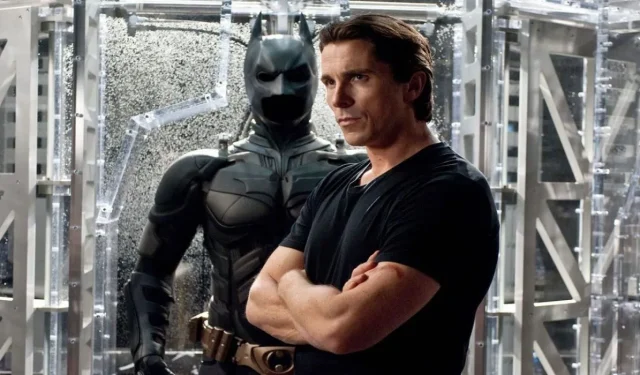
For DC enthusiasts, The Dark Knight is a treasure trove of Easter eggs and nods to the rich tapestry of its comic book universe. Released in 2008, this iconic film has not only captivated audiences but has also secured its place as one of the greatest superhero films in cinematic history. Its impact continues to resonate, ensuring that viewers will revisit this masterpiece for years to come.
In contrast to the contemporary DC landscape, which has seen the contentious DCEU come and go, The Dark Knight stands alone in its own unique universe. This film deftly incorporates references to various DC properties alongside pop culture elements, all skillfully embedded within Christopher Nolan’s unforgettable narrative.
10 Joker’s Mask
A Nod to the Original

The opening scene of The Dark Knight is unforgettable, marking a high point in superhero film history. Here, we witness Joker’s henchmen orchestrating a meticulously planned bank heist, where each member is eliminated to maximize their share. This gripping introduction culminates with Joker revealing himself, killing the last crew member, and claiming the spoils, brilliantly showcasing Heath Ledger’s iconic portrayal.
Interestingly, the mask worn by the Joker during this sequence serves as a whimsical tribute to the mask donned by César Romero in the campy 1960s Batman series. Romero, the first live-action Joker, set a standard that has influenced numerous portrayals to this day. By referencing the past, The Dark Knight connects its cinematic legacy to that of its predecessors, reminding viewers of the pivotal moments that shaped the superhero genre.
9 Film’s Release Date on Joker’s Picture
The Start of Something Beautiful
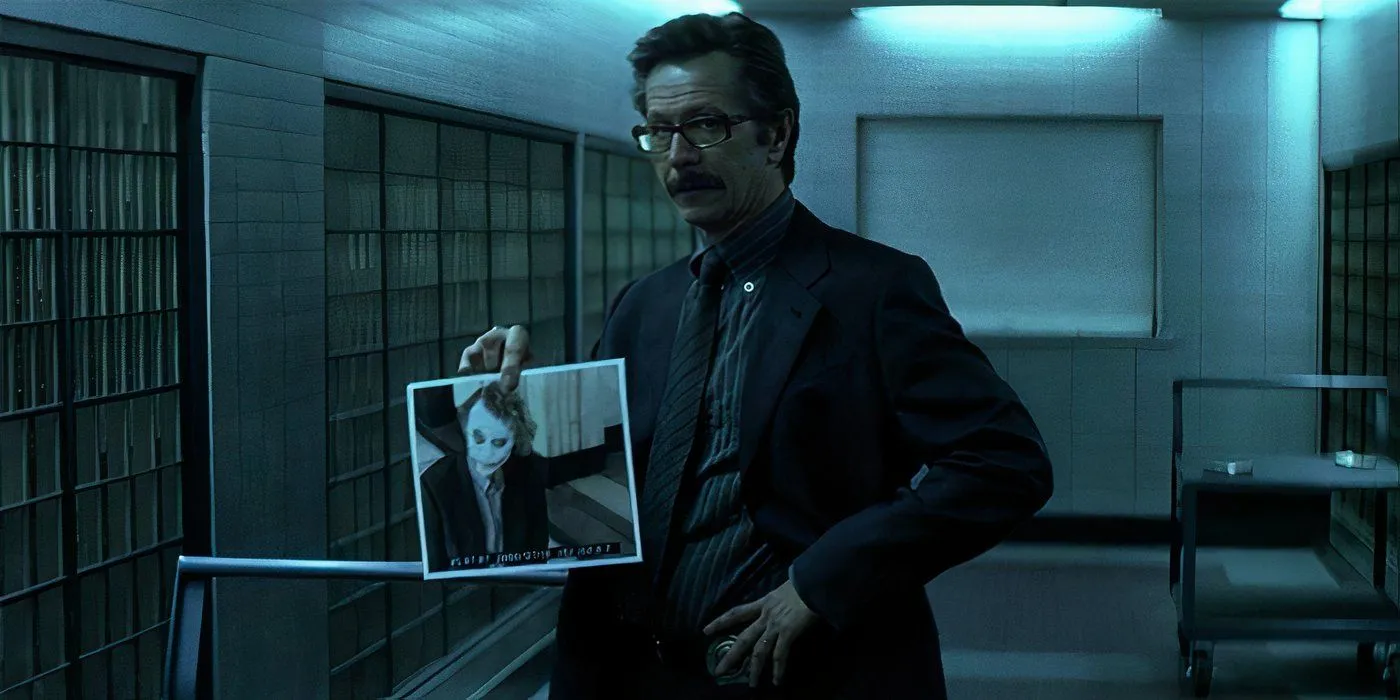
In a blink-and-you-miss-it moment, Detective Jim Gordon reveals a security photo bearing a timestamp: July 18, 2008. This minute detail not only enriches the narrative but also connects directly to the film’s release just two months after the launch of the Marvel Cinematic Universe with Iron Man.
This particular date marks a watershed moment in cinematic history as it coincides with the theatrical debut of The Dark Knight, which shattered box office records and redefined the superhero genre. The reference imbued within the film serves as a delightful reminder of its monumental impact on both DC and the broader film landscape.
8 Batman Able to Move His Head
It’s About Time He Could


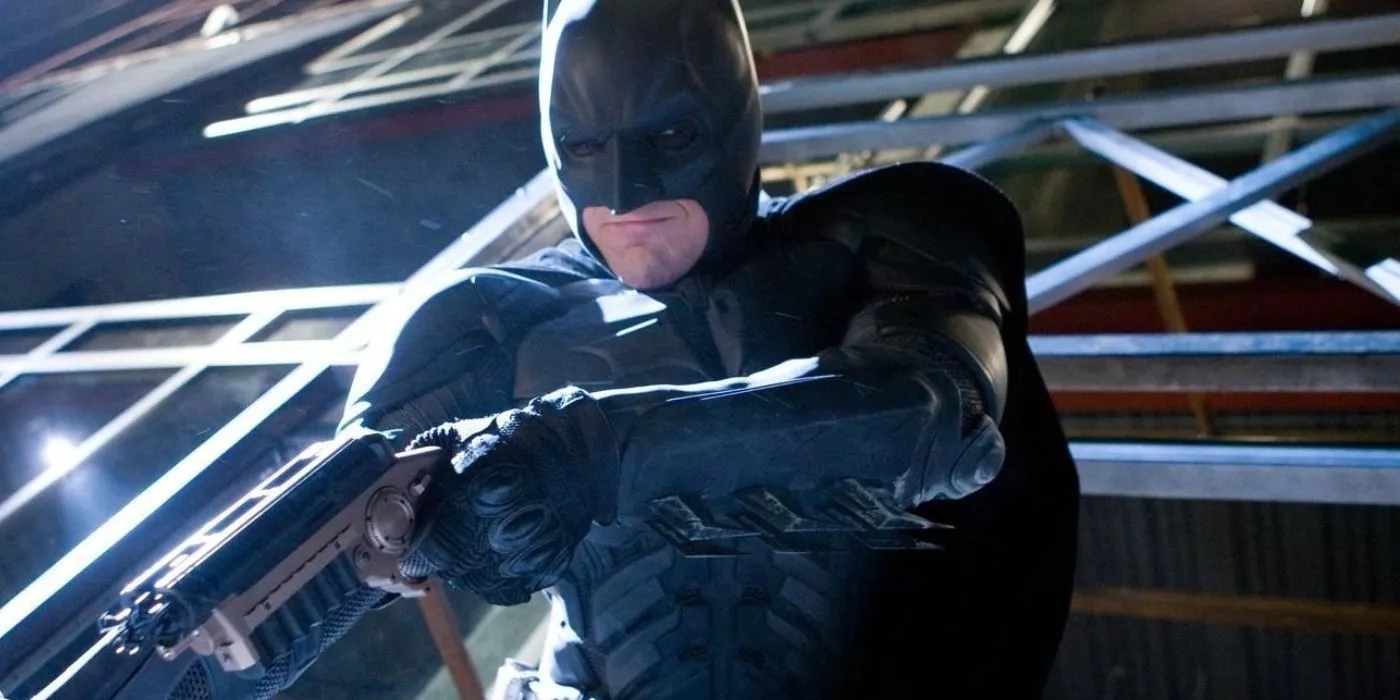

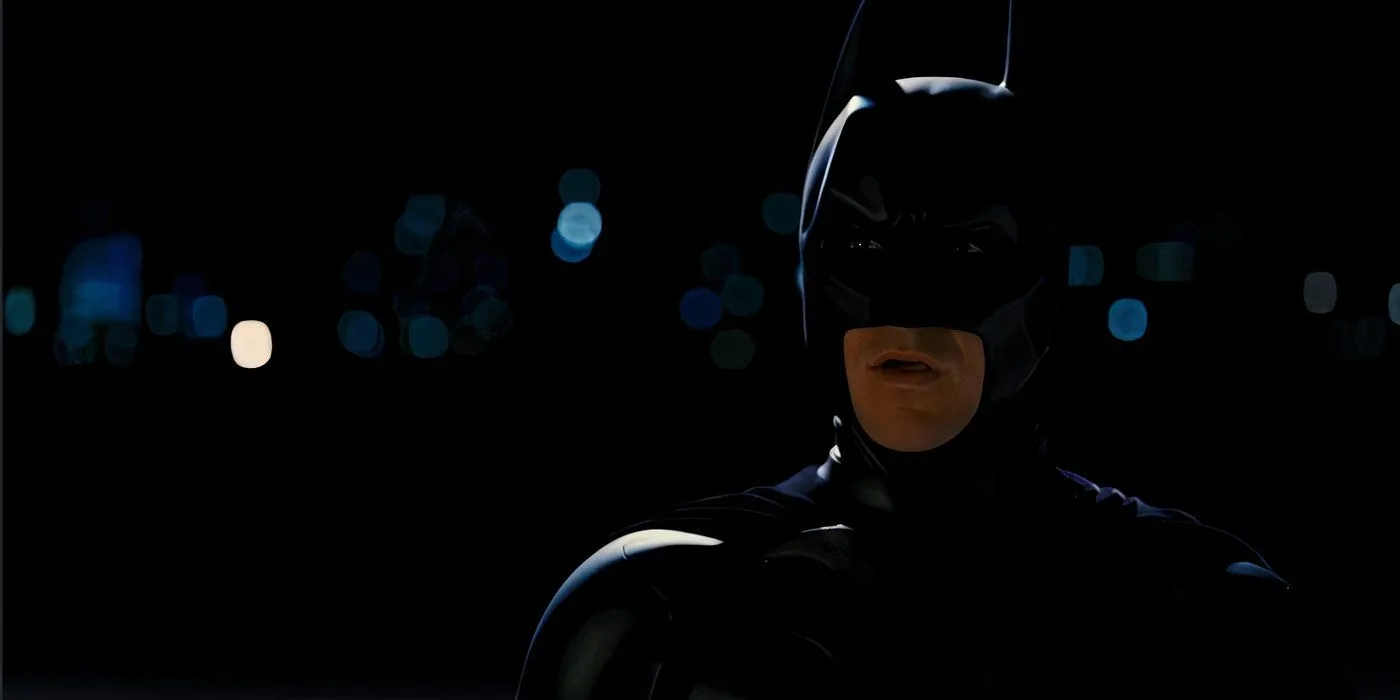
Drawing heavily from its predecessor, Batman Begins, The Dark Knight showcases an evolution in Batman’s design and functionality. Christian Bale’s new suit, developed with the help of Lucius Fox, notably permits him to turn his head with ease, a clever jab at Michael Keaton’s rigid cowl from earlier adaptations.
This upgrade not only enhances Batman’s physical capabilities but also nods to the challenges faced by previous portrayals. It cleverly underscores the growth of the franchise while adding an amusing facet that seasoned viewers can appreciate.
7 Lucius Fox Alluding to Catwoman
Cat Got Your Tongue?

In a scene prior to Batman acquiring his upgraded suit, a humorous exchange occurs between Bruce Wayne and Lucius Fox regarding the suit’s durability. When Wayne inquires if it can withstand dog attacks, Fox cleverly quips that it “should do fine against cats.”
This throwaway line serves as a playful nod to Catwoman, who would later be introduced in the franchise by Anne Hathaway in The Dark Knight Rises. Given Catwoman’s enduring popularity within the DC universe, such references are always exciting for dedicated fans.
6 Joker Is An Eminem Fan
Please Stand Up, Please Stand Up!

Throughout The Dark Knight, the Joker’s calling cards take on a life of their own, serving as a signature of his chaotic persona. Originally introduced at the conclusion of Batman Begins, these cards symbolize his twisted sense of humor and invite an intricate game with his foes.
One notable card features the phrase, “Will the real Batman please stand up?” which cleverly references Eminem’s hit “The Real Slim Shady.” This playful twist not only highlights the Joker’s unsettling humor but also reinforces his duality as both a menacing threat and a humorous character.
5 Joker’s Hidden Shoe Knife
An Icon of Cinema

During a pivotal fundraiser scene, the Joker makes a dramatic entrance that culminates in chaos. As he encounters Rachel Dawes and fights Batman, he employs an intriguing weapon—a knife concealed in his shoe. This tactic exemplifies his unpredictable nature and adds a layer of dark humor to the confrontation.
While the shoe knife might seem comedic, it has roots in cinematic history, notably appearing in the classic James Bond film, From Russia With Love. Such clever references enhance the film’s depth, showcasing the creators’ intention to pay homage to iconic cinema.
4 Bruce Wayne’s Lamborghini
Does It Come in Black?

When not clad in his Batsuit, Bruce Wayne embodies luxury with his Lamborghini Murciélago, a striking vehicle that plays a significant role in the film. Not only does it serve as a symbol of Wayne’s affluence, but he ultimately sacrifices it to save a whistleblower from imminent danger.
The name “Murciélago” translates to “bat” in Spanish, cleverly aligning with Batman’s identity. This attention to detail demonstrates the filmmakers’ commitment to enriching the narrative through thoughtful symbolism and clever references.
3 Spider-Man 3 Makes an Appearance
A Nod to Marvel’s Biggest Hero
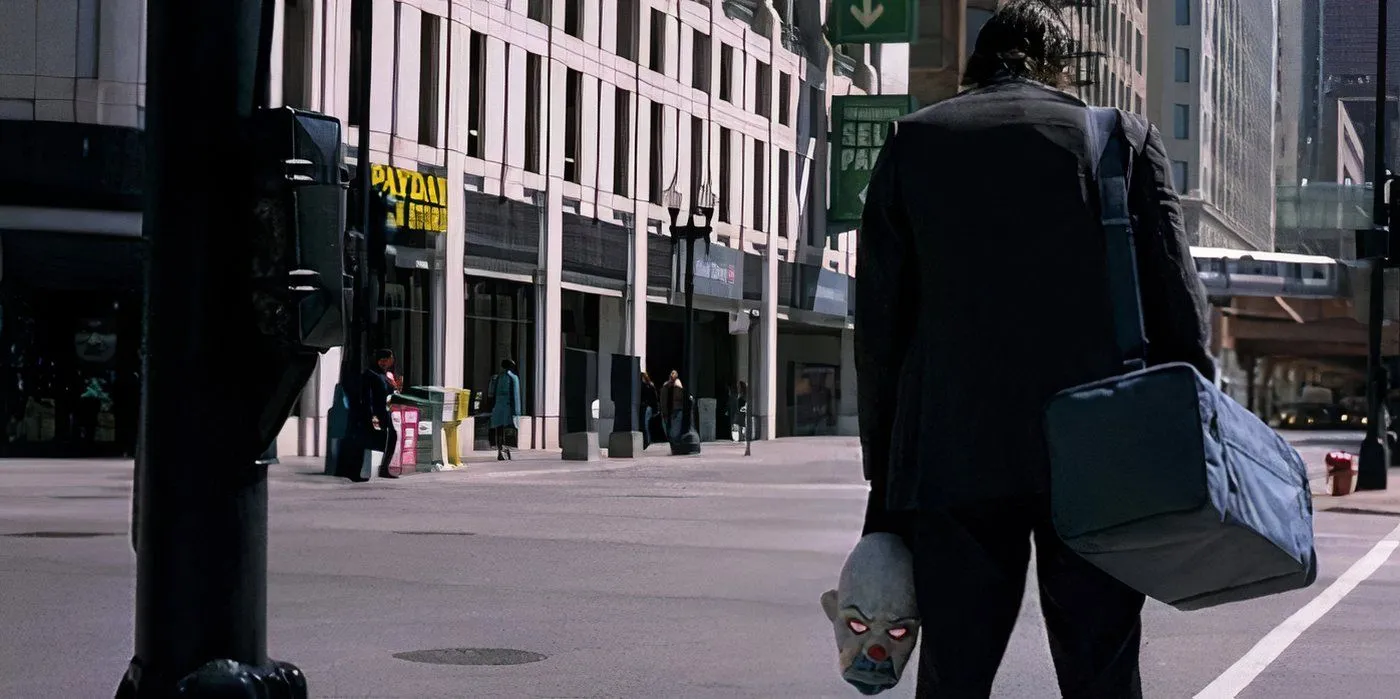
In a subtle nod to the broader cinematic landscape, a poster for Spider-Man 3 can be spotted in the background of one of the opening scenes. Although the film had its share of criticism, it has since garnered appreciation, making the reference a compelling link between two titans of the superhero genre.
This inclusion serves as a reminder of the interconnected nature of superhero films, with the legacy of both DC and Marvel taking shape in the years that followed their respective releases.
2 Possible Riddler Connection
Riddle Me This, Batman

In the midst of standout performances, a subtle reference to a potential third villain emerges through Coleman Reese, a character who learns Bruce Wayne’s secret identity. When Lucius Fox refers to him as “Mr. Reese,” it’s hard not to notice the phonetic similarity to “mysteries,” hinting at a possible Riddler connection.
While this suggestion ultimately leads nowhere within The Dark Knight, it ignites curiosity among fans, creating speculation that adds depth to the intricate web of the film’s storytelling.
1 “You Complete Me”
Joker Loves Those Pop Culture References
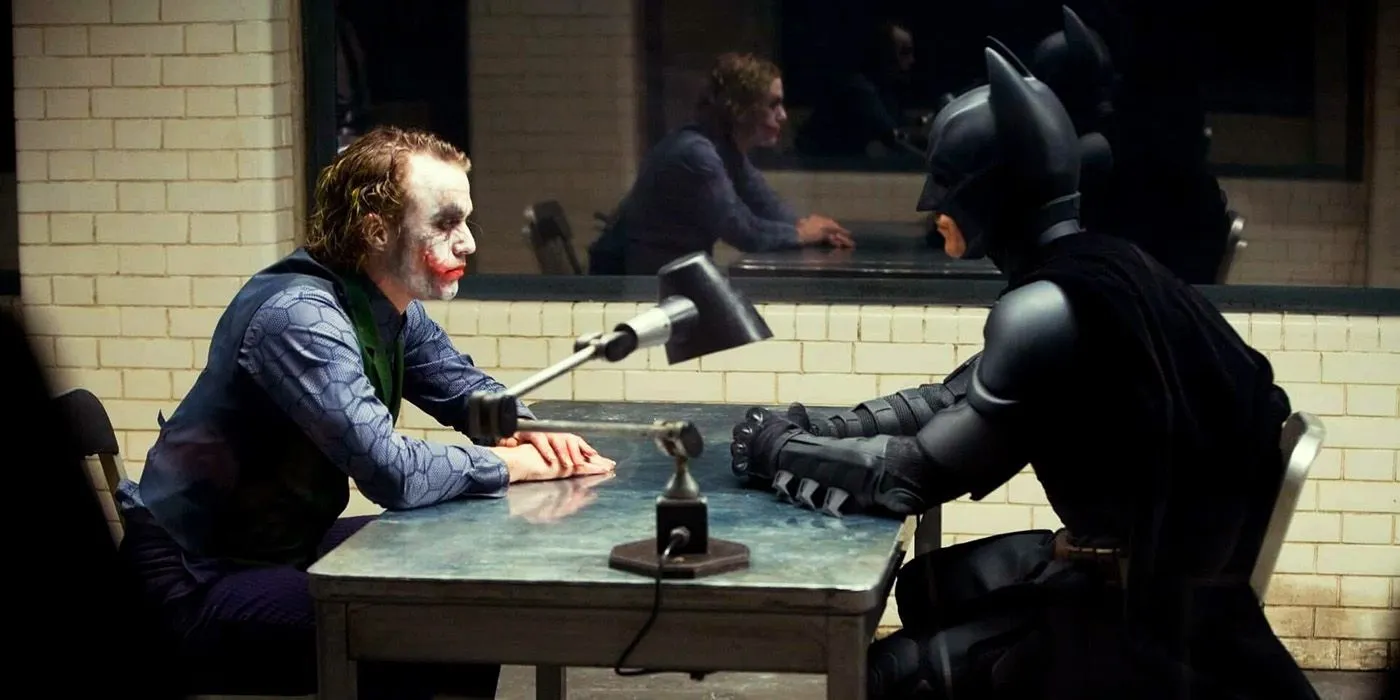
The tension reaches its zenith during the iconic interrogation scene between Batman and the Joker, where the latter cheekily states, “You complete me.” This line, lifted from Tom Cruise’s classic film Jerry Maguire, serves as a humorous yet sinister reflection of their intertwined fates.
Not only does this reference highlight the Joker’s dark sense of humor, but it also reinforces the profound bond and conflict between the two characters, further enriching the narrative of The Dark Knight.




Leave a Reply ▼